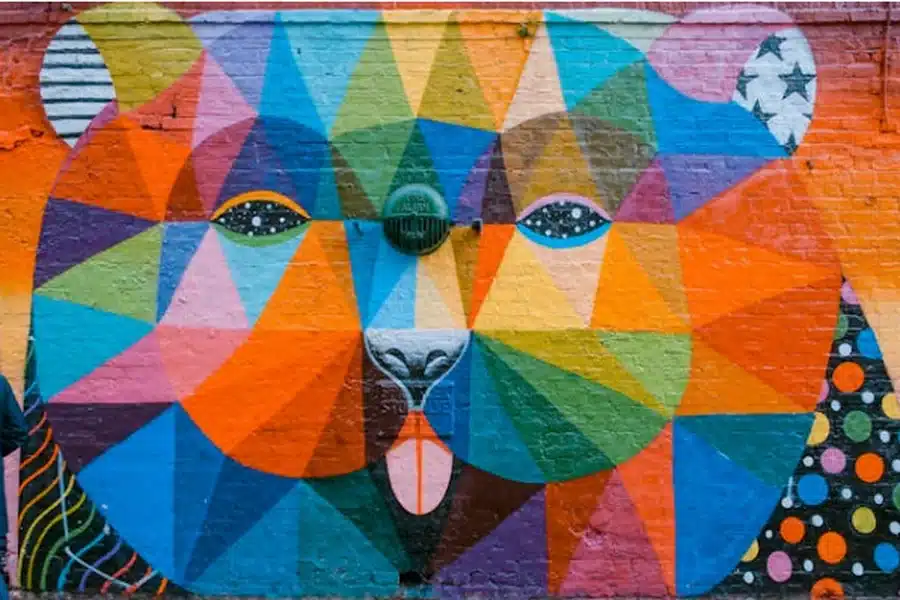1. The Role of Whitewall Art in Modern Interiors
a. How Whitewall Art Enhances Space Aesthetics
The transformation of interior spaces through carefully selected photographic art has become a cornerstone of contemporary design. Unlike mass-produced decorative elements, fine art photography brings authenticity, emotional depth, and visual interest to environments ranging from minimalist apartments to expansive corporate offices.
Premium photographic prints serve as focal points that anchor room designs, establish color schemes, and create visual rhythm within spaces. The clean, precise reproduction quality achievable through professional printing services allows images to convey their full impact, whether showcasing dramatic landscapes, abstract compositions, or intimate portraits.
Interior designers increasingly recognize that the quality of art reproduction significantly impacts its effectiveness within a space. When photographs are printed with exceptional attention to detail, color accuracy, and material quality, they transcend mere decoration to become essential design elements that elevate the entire aesthetic experience.
b. Emotional and Visual Impact on Room Atmosphere
The psychological influence of photographic art on interior environments extends far beyond simple visual appeal:
- Mood Regulation: Carefully selected images can dramatically shift the emotional atmosphere of a space—from energizing common areas with vibrant, high-contrast prints to creating tranquil retreats with contemplative, softer-toned photography.
- Spatial Perception: Large-format photography can visually expand smaller spaces, particularly when images feature expansive landscapes or architectural perspectives that create a sense of depth and dimension.
Experienced designers understand that professionally produced whitewall art creates a substantially different impression than standard consumer-grade prints. The superior color rendition, remarkable detail resolution, and material authenticity achieved through premium printing processes contribute significantly to the psychological impact these images have on viewers and inhabitants.
- Personal Connection: Unlike generic decorative elements, photographic art often establishes a deeper emotional resonance with viewers through subject matter, composition, or artistic vision, creating spaces that feel both sophisticated and personally meaningful.
- Visual Anchoring: In open-concept spaces, strategically placed photographic works provide natural focal points that help define functional areas while maintaining visual cohesion throughout the larger environment.
c. Why Interior Designers Choose Whitewall Art Services
Professional designers increasingly partner with specialized printing labs for several key reasons:
- Color Consistency: High-caliber printing services maintain precise color management systems that ensure what appears on screen translates accurately to the final print—crucial when coordinating art with existing color schemes.
- Material Excellence: Access to museum-grade papers like Hahnemühle and Canson, which offer superior color reproduction, tactile quality, and longevity compared to standard photo papers.
- Presentation Options: Professional services provide a range of mounting and framing solutions that complement contemporary interior aesthetics, from minimalist aluminum frames to floating acrylic presentations.
- Technical Expertise: Guidance on selecting appropriate materials based on display conditions, lighting environments, and desired visual impact—considerations that significantly affect how photographic art performs within a space.
2. Materials and Formats That Influence Visual Presence
a. Comparing Materials: Acrylic, Aluminum, Canvas, and More
The substrate upon which photographic art is presented dramatically affects its integration within interior spaces:
- Face-Mounted Acrylic: This spectacular presentation method, where prints are permanently bonded to high-clarity acrylic, creates extraordinary depth and luminosity. The reflective quality enhances color saturation and provides a contemporary, gallery-like appearance particularly effective in modern interiors with controlled lighting.
- Direct Prints on Aluminum: Images printed directly onto specially coated aluminum sheets offer exceptional durability and a distinctive metallic luminosity that enhances certain photographic styles. This medium works particularly well for contemporary architectural spaces and can withstand higher humidity environments like bathrooms or kitchens.
- Fine Art Canvas: Photographs printed on archival canvas and stretched over wooden frames provide a textural quality that softens the distinction between photography and painting. This option often works beautifully in transitional interior styles that blend contemporary and traditional elements.
- Traditional Matted Presentations: Classic presentations with prints on premium photo or fine art paper, matted and framed behind glass, remain timeless options that work across diverse interior styles while offering superior conservation properties.
b. The Influence of Paper Type on Texture and Color Depth
For traditionally presented photographs, paper selection significantly impacts visual characteristics:
- Baryta Papers: These papers feature a barium sulfate coating that provides remarkable color depth and exceptional dmax (maximum black density) values, making them ideal for photographs with dramatic shadows or high-contrast imagery. Their subtle gloss surface creates a dimensional quality reminiscent of traditional darkroom prints.
- Cotton Rag Papers: Natural fiber papers from premium manufacturers like Hahnemühle and Canson offer extraordinary tactile quality and depth. Their textural surface reduces glare while providing exceptional color rendition, particularly for images with subtle tonal gradations. The absence of optical brighteners ensures these papers maintain their natural whiteness level without yellowing over time.
- High-Gloss Photo Papers: These options maximize color saturation and contrast, creating vibrant presentations that work particularly well for contemporary color photography in well-lit spaces. Their reflective surface can dramatically enhance the perceived depth of an image.
- Matte Fine Art Paper: With its non-reflective surface, matte paper creates a contemplative viewing experience that allows viewers to engage with image content without distracting glare. This option particularly complements black and white photography or color images with subtle, nuanced palettes.
c. Choosing the Ideal Size and Format for Room Harmony
Dimensional considerations dramatically impact how photographic art functions within interior spaces:
- Scale Relationships: The most successful installations maintain proportional relationships between art size and wall dimensions. As a general guideline, artwork should occupy approximately two-thirds to three-quarters of available wall space for maximum impact without overwhelming the environment.
- Format Considerations: While standard photographic formats (like 3:2 or 4:5 ratios) remain popular, custom formats allow designers to perfectly fit spaces with unusual dimensions or satisfy specific compositional needs. Professional printing services can accommodate these requirements without compromising image quality.
- Viewing Distance Factors: Optimal print size correlates directly with typical viewing distance. In intimate spaces like hallways or small rooms where viewers stand close to the artwork, smaller formats with fine detail work well. Conversely, larger common areas benefit from scaled-up presentations visible from greater distances.
- Visual Weight Balance: The grammage (paper weight) of prints affects their perceived substance and importance within a space. Heavier papers (300gsm and above) create a more substantial presence that communicates quality and permanence.
3. Curating and Showcasing Your Collection
a. Framing Styles That Match Contemporary Spaces
Frame selection significantly influences how photographic art integrates with interior aesthetics:
- Minimalist Profiles: Thin aluminum or wooden frames in neutral tones create clean, contemporary presentations that allow the image itself to command attention. These understated frames work particularly well in modern interiors with restrained color palettes.
- Floating Presentations: Creating slight separation between the art and frame using specialized mounting techniques produces a sophisticated, gallery-quality appearance. This presentation style draws attention to the physical edges of the print, emphasizing its object quality.
- White and Natural Wood Options: White frames can brilliantly highlight colorful photography while complementing contemporary interiors. Meanwhile, natural wood frames with visible grain add warmth and organic texture that balances technological aspects of photographic reproduction.
- Museum-Quality Construction: Beyond aesthetics, professionally constructed frames with UV-protective glass, acid-free materials, and proper spacing between print and glazing ensure long-term preservation while maintaining visual clarity.
b. Layout Tips: Single Statement Pieces vs. Gallery Walls
Strategic arrangement dramatically affects how photographic art functions within spaces:
- Impact of Scale: Oversized single prints create powerful focal points that anchor entire rooms, particularly effective when featuring images with strong compositional elements or emotional resonance. These statement pieces often work best on walls visible upon entering a space.
- Thematic Collections: Groupings of related images—whether united by subject matter, color palette, or artistic style—create rhythm and narrative flow within interiors. These collections can evolve over time, allowing spaces to remain dynamic.
- Grid Arrangements: Formally structured layouts with consistent spacing and identical frame styles create ordered, architectural presentations ideal for contemporary environments. This approach works particularly well with series-based photographic work exploring variations on a theme.
- Salon-Style Displays: More eclectic arrangements combining varied frame styles, sizes, and orientations create dynamic, collected-over-time aesthetics. This approach allows for personal expression while accommodating growing collections.
c. Preservation: Light, Humidity, and Regular Cleaning
Maintaining the investment value and visual impact of fine photographic prints requires attention to environmental factors:
- Light Management: Even UV-protected prints will eventually show effects of prolonged light exposure. Position valuable photographs away from direct sunlight, and consider using museum-grade glass or acrylic with enhanced UV filtering properties for particularly valuable pieces.
- Humidity Control: Extreme or fluctuating humidity levels can damage prints through paper warping, mold growth, or adhesive deterioration. Maintain relative humidity between 40-55% for optimal preservation, and avoid hanging valuable pieces in naturally damp areas.
- Surface Care: Clean glazing (glass or acrylic) using appropriate anti-static cloths and cleaning solutions designed specifically for these materials. Never spray cleaners directly onto frames or glazing—apply to the cloth first to prevent liquid from seeping into frames.
- Professional Assessment: For significant collections, consider periodic evaluation by conservation professionals who can identify early signs of deterioration before they become visible to untrained eyes. Award-winning conservation labs can provide valuable guidance for maintaining pieces with both aesthetic and investment value.
The integration of fine photographic art into interior environments represents a significant evolution in design thinking. As digital photography has transformed the world of image-making, specialized printing services have simultaneously elevated reproduction quality to unprecedented levels. This convergence allows designers and homeowners to incorporate truly museum-quality imagery into living and working spaces, creating environments that are not only visually striking but intellectually and emotionally engaging.






